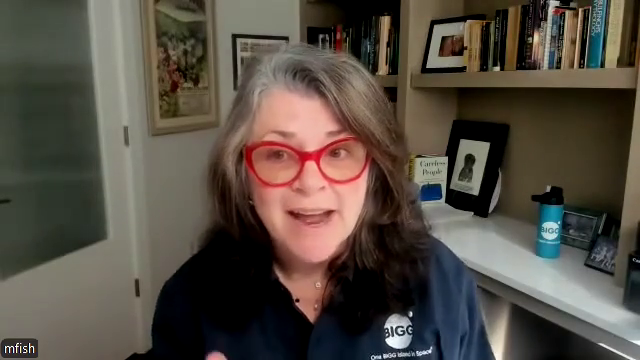 The liver tumor therapy company, whose technology was developed at the University of Michigan and supported by Michigan’s innovation ecosystem, announced its $2.25 billion majority acquisition this month
The liver tumor therapy company, whose technology was developed at the University of Michigan and supported by Michigan’s innovation ecosystem, announced its $2.25 billion majority acquisition this month
It’s no myth: Michigan is celebrating its newest unicorn. HistoSonics, Inc., a company that developed a non-invasive sonic beam therapy called histotripsy to destroy liver tumors, announced a $2.25 billion majority acquisition by globally recognized private and public investors on Aug. 7. The science of histotripsy was developed by scientists at the University of Michigan (U-M) over 20 years ago as a potential alternative to surgical procedures, and was backed early by the state’s innovation ecosystem, including Michigan-based investors, VC funds and support through university programs like the Technology Transfer Talent Network.
HistoSonics joins other notable Michigan-born unicorn startups including Duo Security, Coupa (formerly Llamasoft), OneStream Software and StockX, building on Michigan’s legacy of paving the way for tech startups with statewide networks and resources. This newest startup success underscores the importance of investing in Michigan’s innovators and entrepreneurs and continuing to build an ecosystem where founders can grow and succeed.
“Ecosystem investment matters, and returns take time; this is what long-term deep tech success looks like,” says Michigan Economic Development Corporation (MEDC) Chief Innovation Ecosystem Officer Ben Marchionna. “This Michigan-built technology is already helping patients who had no other options, and will continue to redefine treatment. Congratulations to the HistoSonics team, Mike Blue, Jim Adox, the founding scientists, the fearless investors, the University of Michigan and all the other builders and backers who bet early: you made this happen. This exit will create new angels, repeat founders and confidence in Michigan as a home for world-class innovation.”
The company continues to maintain its engineering and R&D in Ann Arbor, contributing to the region’s innovation prowess.
In a post on LinkedIn announcing the company’s acquisition, HistoSonics president and CEO Mike Blue acknowledged investors, including the State of Michigan and Ann Arbor-based Venture Investors Health Fund, who engaged with the company early to position it for success.
“I want to congratulate and thank our existing investors, many who were the very first to believe and invest in our dream and who are continuing to support us through this acquisition,” Blue said in the post. “Our relentless focus will continue to be on improving the lives of every patient we treat, being the absolute best partner to our customers, and building the best damn company we can, one that every employee loves, and every shareholder is proud of, maximizing future value for all. The next chapter of our journey will be the most incredible yet.”
From invention to lifesaving technology: A timeline of HistoSonics
The HistoSonics story goes back over 20 years, and its growth can largely be attributed to the development and support from its earliest days in Michigan.
2005: The first invention report for what we now call histotripsy is disclosed to U-M’s tech transfer office.
2009: The company is spun out of U-M with backing from Ann Arbor-based Venture Investors Health Fund, led by Jim Adox, and fueled in part by the Venture Michigan Fund and 21st Century Investment Fund (which was funded by the 21st Century Jobs Fund), state-created 2006- and 2011-vintage $200M fund-of-funds for bold, early tech bets.
2010: HistoSonics raises a $11M Series A. Then-CEO Christine Gibbons joins via the Michigan Venture Capital Association’s Executive-in-Residence program, supported by the MEDC.
2017: HistoSonics pivots from prostate treatment to cancer and hires now-CEO Mike Blue, who brought a strong oncology background. The company raises more funding, including from Michigan’s regional angel networks (Grand Angels) and the Wolverine Venture Fund, a student-run fund at the Zell Lurie Institute for Entrepreneurship at the University of Michigan – Stephen M. Ross School of Business.
2018: The Michigan Corporate Relations Network provided assistance via team members and $40k award to the HistoSonics team.
2019–2024: HistoSonics raises over $300M. Investors include Johnson & Johnson, Varian, Alpha Wave, SWIB, JJDC. The company builds the Edison system and is cleared by the FDA in 2023 to non-invasively destroy liver tumors. Their technology requires no needles, incisions or radiation.
2025: In August 2025, the company is acquired for $2.25B by a syndicate of globally recognized investors, including K5 Global, Jeff Bezos (Bezos Expeditions), Wellington Management and other top-tier investors. HistoSonics plays to stay private to scale faster. With over 100 systems already sold, they plan to adapt technology to focus on the kidneys, pancreas and prostate next.
Thanks to the support of Michigan’s innovation ecosystem and resources from the MEDC, companies like HistoSonics can continue to bring game-changing technologies to the world. Investments in Michigan’s innovation and entrepreneurship ecosystem are bets worth making. Innovation starts here in Michigan – learn more.








